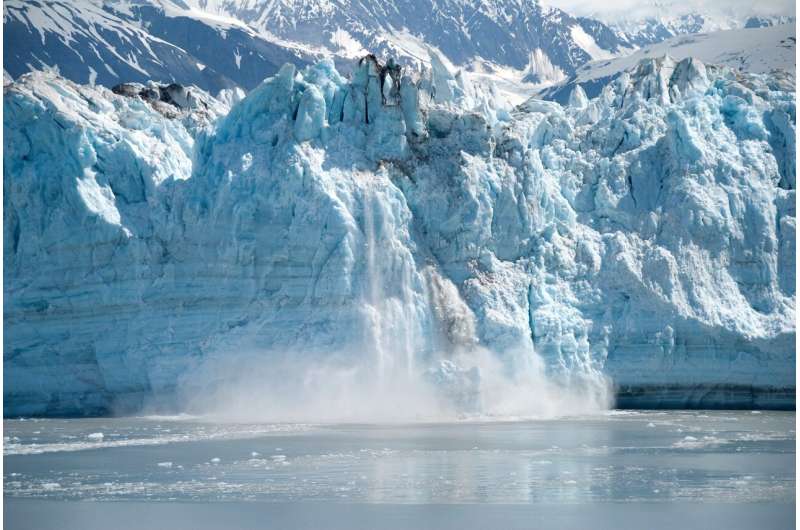
November 13, 2024 This article has been reviewed according to Science X's editorial process and policies . Editors have highlightedthe following attributes while ensuring the content's credibility: fact-checked peer-reviewed publication trusted source proofread by University of Birmingham Glaciers that are within three miles of a volcano move nearly 50% quicker than average, a new study has found, which could help create early warning of future eruptions. In an article published in Communications Earth & Environment , researchers from the University of Aberdeen, University of Birmingham and Manchester Metropolitan University analyzed velocity data from 85% of the world's approximately 217,000 glaciers.
After controlling for factors such as climate, ice thickness and surface slope, the team found that glaciers near active volcanoes typically flowed 46% faster than other glaciers. Glaciers looked at in the study include those associated with some of the most iconic and infamous volcanoes in the world, such as Mt Rainier and Glacier Peak in Washington, Mt Redoubt and Mt Veniaminof in Alaska, and Eyjafjallajokull in Iceland, which erupted over a period of three months in 2010 and led to air disruption that was estimated to have affected 10 million passengers. Analysis of these and other glaciers suggests that high geothermal heat from nearby volcanic activity likely transfers into the base of glaciers and increases melting of the ice.

The enhanced melt reduces friction between the glacier and the underlying rock, resulting in faster glacier flow. The findings could enable volcanologists to develop a new early warning system for potential eruptions at sites such as Eyjafjallajokull by tracking changes in glacier velocities that could reveal increases in volcanic activity several months ahead of an eruption. Dr.
Joseph Mallalieu from the School of Geography, Earth and Environmental Sciences at the University of Birmingham and corresponding author of the study said, "Our research has notable implications for the mitigation of volcanic hazards. Ice-covered volcanoes are among the most dangerous globally because glacial meltwater released during eruptions can trigger outburst floods and debris flows capable of rapidly submerging nearby settlements. "Ice cover also limits the use of established techniques for monitoring volcanic activity.
Recent studies have shown that the size, shape and elevation of glaciers can respond to volcanic activity, but the relationship between volcanism and glacier flow remained unknown. Our results suggest that satellite observations of glacier velocity could be a valuable new technique for monitoring volcanic activity and predicting eruptions." Professor Matteo Spagnolo from the School of Geosciences at the University of Aberdeen and co-author of the study said, "If glacier velocity can be used as a precursor months before an eruption , it will help focus additional monitoring efforts on volcanoes likely to erupt, which in turn will alert decision makers.
"It could provide much needed forewarning to local authorities to plan the possible evacuation of a nearby city, or impose a no-fly zone, without relying on last minute decisions. It will also help prepare the local population for what might come well in advance." Dr.
Iestyn Barr, Reader in Glaciovolcanology at Manchester Metropolitan University and co-author of the study said, "The potential for glacier monitoring to help predict volcanic eruptions is an exciting and important finding from this study. Over coming years, we hope to investigate and exploit this potential for glacier-covered volcanoes globally." More information: Proximity to active volcanoes enhances glacier velocity, Communications Earth & Environment (2024).
Journal information: Communications Earth & Environment Provided by University of Birmingham.














